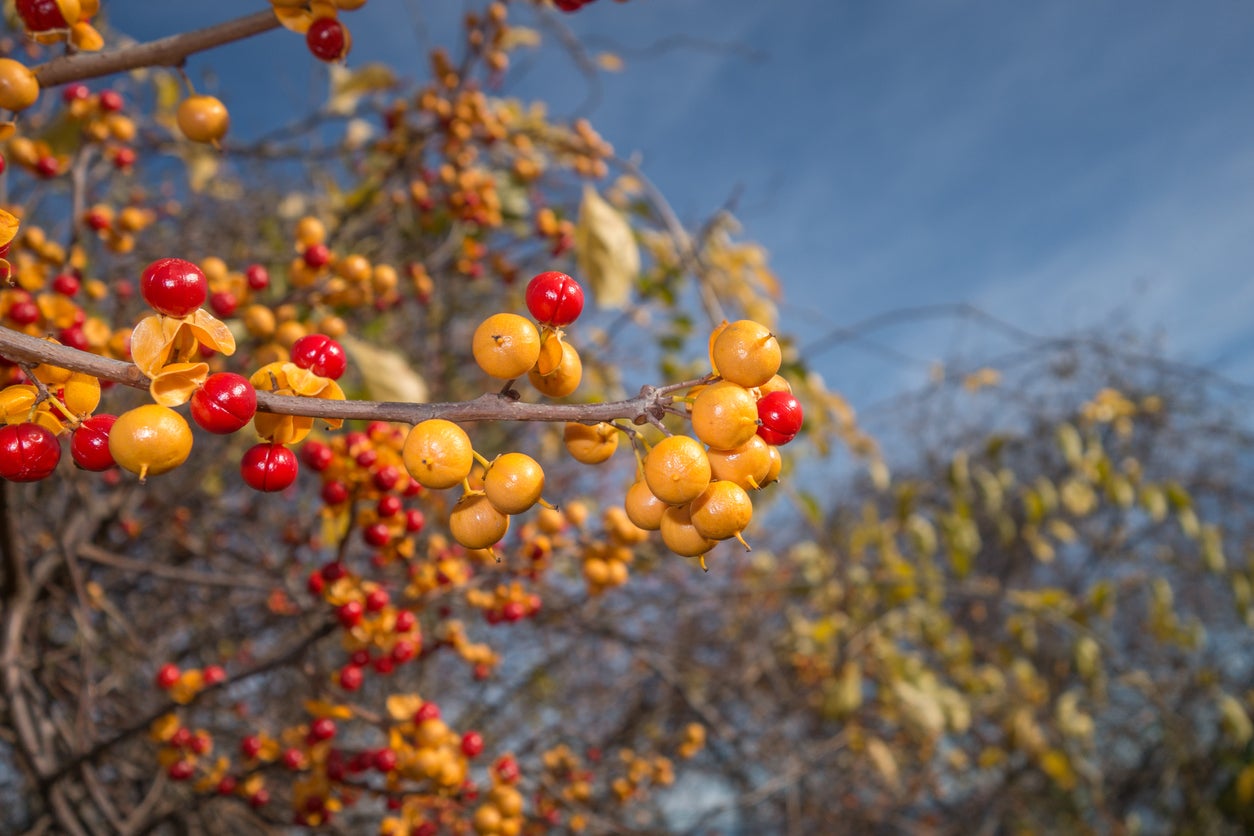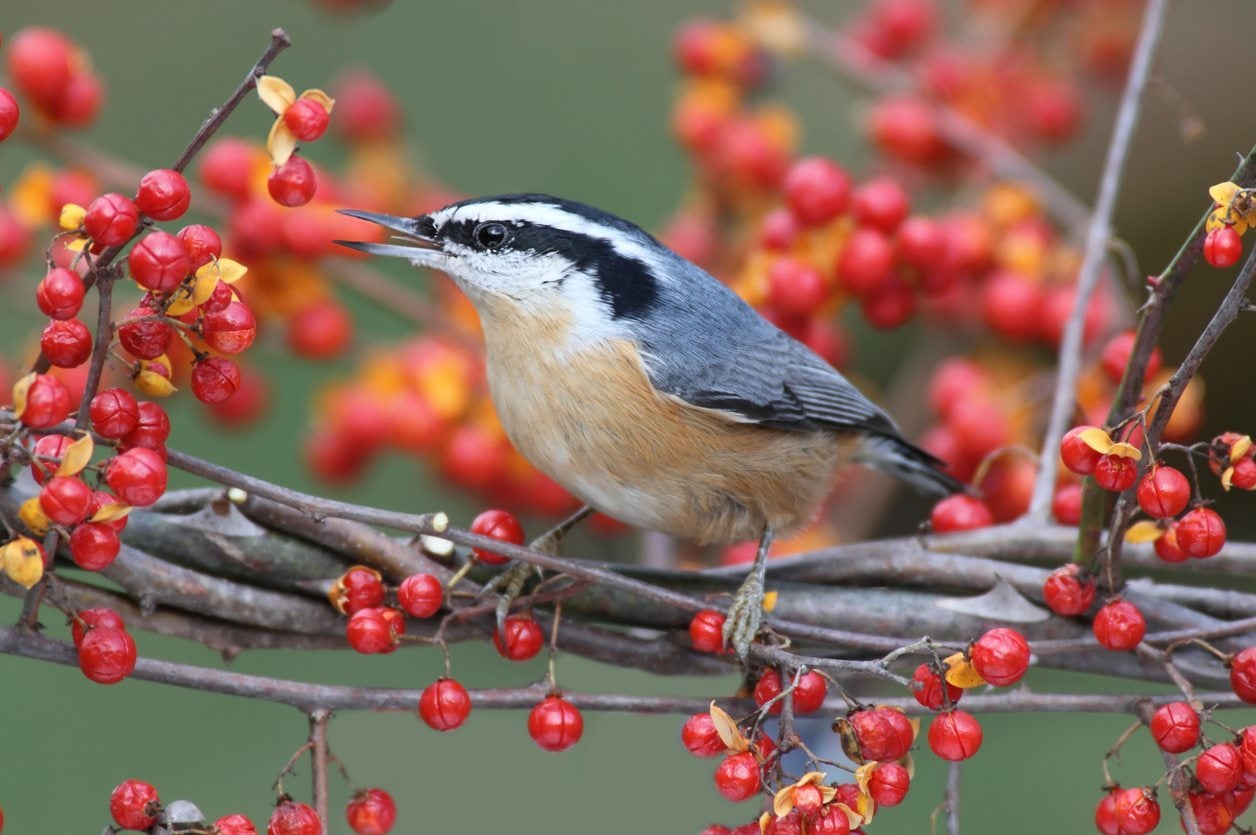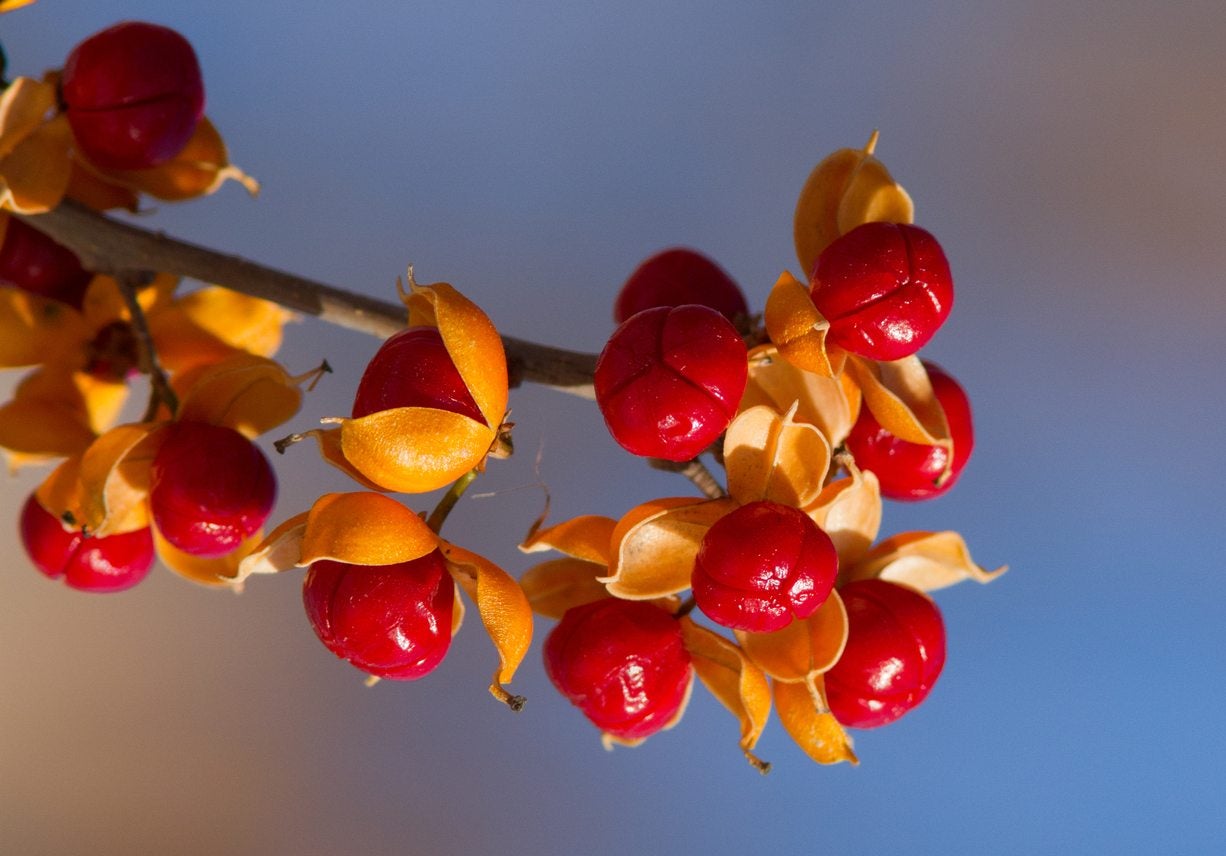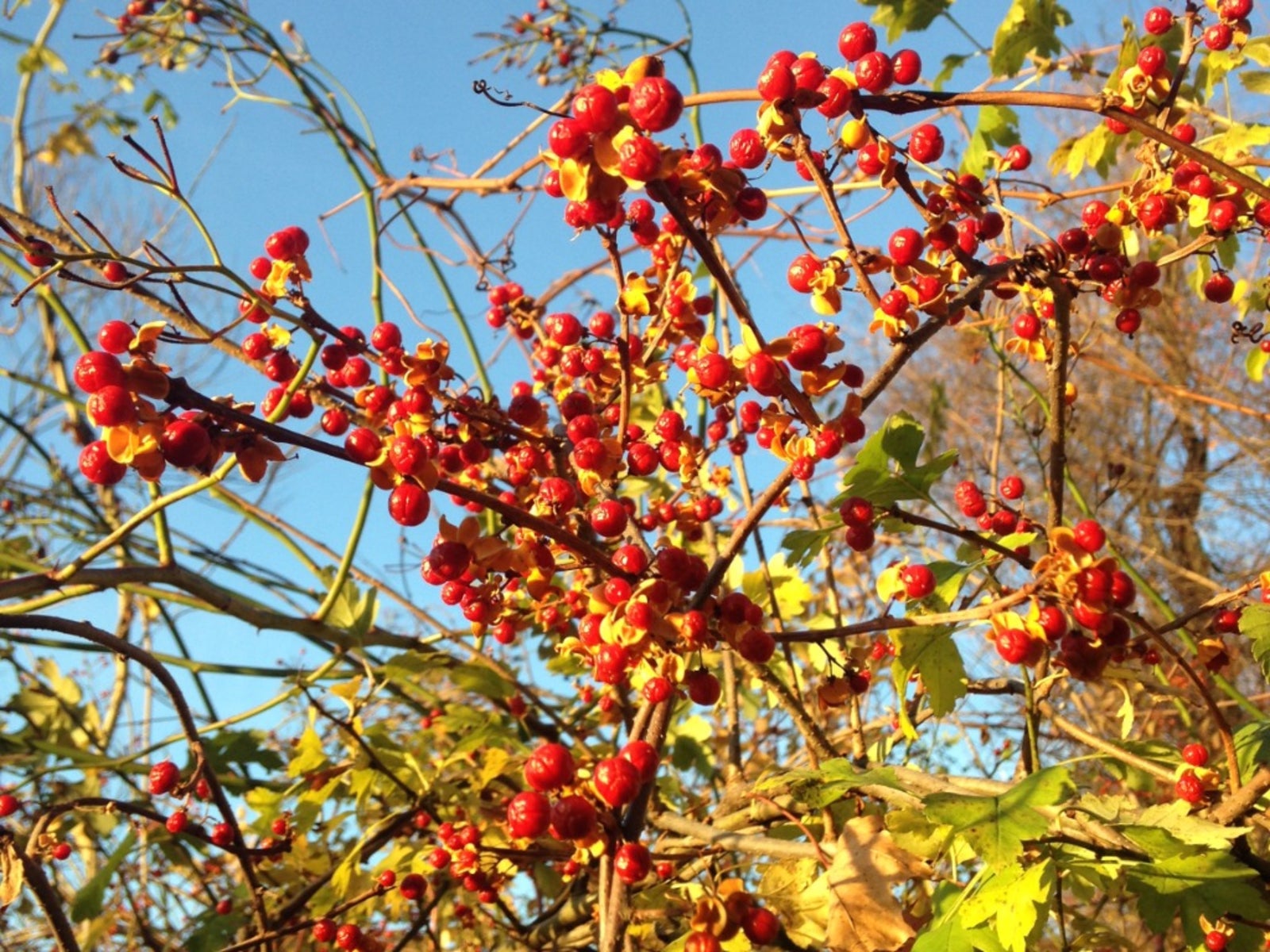American Bittersweet Vine: Tips For Growing Bittersweet Plants


Bittersweet vines are North American native plants that thrive throughout most of the United States. In the wild, you can find it growing on the edges of glades, on rocky slopes, in woodland areas and in thickets. It often winds itself around trees and covers low-growing shrubs. In the home landscape you can try growing bittersweet along a fence or other support structure.
What is American Bittersweet Vine?
American bittersweet is a vigorous deciduous, perennial vine that grows 15 to 20 feet (4.5-6 m.) tall. It is native to central and eastern North America. They produce yellowish green flowers that bloom in spring, but the flowers are plain and uninteresting compared to the berries that follow. As the flowers fade, orange-yellow capsules appear. In late fall and winter, the capsules open at the ends to display the bright red berries inside. The berries remain on the plant well into winter, brightening winter landscapes and attracting birds and other wildlife. The berries are poisonous to humans if eaten, however, so practice caution when planting around homes with small children.
Growing Bittersweet Vines
In very cold climates, make sure you plant American bittersweet vine (Celastrus scandens) rather than Chinese bittersweet (Celastrus orbiculatus). American bittersweet vine is hardy in USDA plant hardiness zones 3b through 8, while Chinese bittersweet suffers frost damage and may die to the ground in USDA zones 3 and 4. It is hardy in zones 5 to 8. When growing bittersweet for the attractive berries, you'll need both a male and female plant. The female plants produce the berries, but only if there is a male plant nearby to fertilize the flowers. American bittersweet vine grows quickly, covering trellises, arbors, fences, and walls. Use it to cover unsightly features in the home landscape. When used as a groundcover it will hide rock piles and tree stumps. The vine will climb trees readily, but limit the tree climbing activity to mature trees only. The vigorous vines can damage young trees.
American Bittersweet Plant Care
American bittersweet thrives in sunny locations and in almost any soil. Water these bittersweet vines by soaking the surrounding soil during dry spells. Bittersweet vine doesn't usually need fertilization, but if it appears to get off to a slow start, it may benefit from a small dose of general purpose fertilizer. Vines that receive too much fertilizer don't flower or fruit well. Prune the vines in late winter or early spring to remove dead shoots and control excess growth. Note: American bittersweet and other bittersweet varieties are known to be aggressive growers and are, in many areas, considered noxious weeds. Make sure to check whether or not it is advisable to grow this plant in your area beforehand, and take necessary precautions on its control if currently growing the plant.
Gardening tips, videos, info and more delivered right to your inbox!
Sign up for the Gardening Know How newsletter today and receive a free copy of our e-book "How to Grow Delicious Tomatoes".

Jackie Carroll has written over 500 articles for Gardening Know How on a wide range of topics.
-
 Looking For Plants To Give You The Soft And Fuzzies? Try These 5 Fuzzy Leaf Plant Options
Looking For Plants To Give You The Soft And Fuzzies? Try These 5 Fuzzy Leaf Plant OptionsLovers of texture, drama, silver foliage and tactile plants will adore these special sensory garden additions. These fuzzy leaf plant options will leave you all aglow
By Susan Albert
-
 Get Ready For A Summer Of Hummers! Grow These Full Sun Hummingbird Plants and Flowers
Get Ready For A Summer Of Hummers! Grow These Full Sun Hummingbird Plants and FlowersIf you’re lucky enough to enjoy a sunny backyard, make sure you are maxing out on your pollinator opportunities and grow these full sun hummingbird plants and flowers
By Tonya Barnett
-
 Autumn Revolution Bittersweet Info: Learn About American Autumn Revolution Care
Autumn Revolution Bittersweet Info: Learn About American Autumn Revolution CareFor fall and winter gardens, we sometimes have to look for interest besides blooms. One such plant that can add splashes of color is American Revolution bittersweet vine, more commonly referred to as Autumn Revolution. Click on this article for more info.
By Darcy Larum
-
 American Bittersweet Propagation: How To Grow Bittersweet From Seed Or Cuttings
American Bittersweet Propagation: How To Grow Bittersweet From Seed Or CuttingsIf one bittersweet vine isn't enough for your garden, you can propagate it and grow more. You can either start growing bittersweet cuttings or plant bittersweet seeds. If you are interested in propagating American bittersweet vines, click here for tips.
By Teo Spengler
-
 Oriental Bittersweet Information: Guide To Oriental Bittersweet Control
Oriental Bittersweet Information: Guide To Oriental Bittersweet ControlAsian bittersweet was once planted as an ornamental. However, it escaped cultivation and spread into wild areas where it crowds out native trees, shrubs and other vegetation. Find information about killing oriental bittersweet in this article.
By Teo Spengler